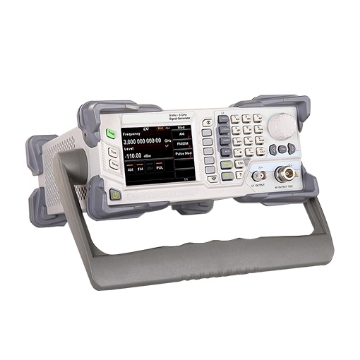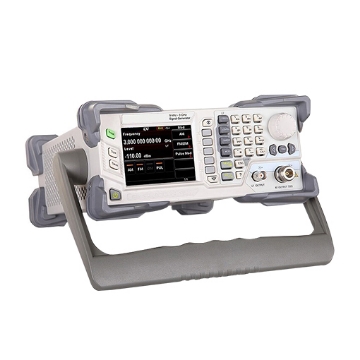RF Generators
9kHz~1.5GHz Digital RF Generator
9kHz~2GHz Digital RF Signal Generator
9kHz~3GHz Radio Frequency Generator
9kHz~3.6GHz Radio Frequency Signal Generator
An RF (Radio Frequency) Generator is a device used to generate signals in the radio frequency range, typically from a few kilohertz (kHz) to several gigahertz (GHz). These generators are essential tools in electronics, telecommunications, and research for testing and characterizing RF components, systems, and circuits.
RF Generator Working Principle
An RF generator works by producing a continuous wave (CW) signal at a specific frequency within its operating range. The core of the generator is an oscillator circuit that determines the frequency of the output signal. This oscillator can be controlled and adjusted to produce the desired frequency, typically by varying components such as capacitors or through digital synthesis methods like Direct Digital Synthesis (DDS).
The signal passes through amplifiers once the frequency is set to achieve the required output power level. The signal can also be modulated with different types of modulation such as amplitude modulation (AM), frequency modulation (FM), or phase modulation (PM)—to simulate various communication signals.
In more advanced RF generators, additional components handle pulse modulation and provide the capability to sweep across a range of frequencies and power levels. These features are essential for testing and characterizing RF devices, systems, and components in real-world conditions. The output is then transmitted through an RF output port, where it can be connected to the device under test.
RF Generator Key Features
Wide Frequency Range: RF generators typically cover a broad frequency spectrum, such as 9 kHz to 3.6 GHz, making them suitable for diverse applications from audio frequencies to microwave bands.
Modulation Capabilities: These generators support multiple modulation types, including AM, FM, PM, and pulse modulation. This allows for the simulation and testing of various signal types used in communication systems.
High Output Accuracy: RF generators offer precise control over output frequency and amplitude, ensuring accurate and repeatable test conditions. Some models also include low-phase noise and high signal purity for sensitive measurements.
Comprehensive Sweep Functions: They often feature frequency and power sweep functions, enabling users to analyze device performance across a range of operating conditions.
User-Friendly Interface and Remote Control: Modern RF generators come with intuitive interfaces, often touchscreen-based, and support remote control via USB, LAN, or GPIB, facilitating integration into automated test setups.





